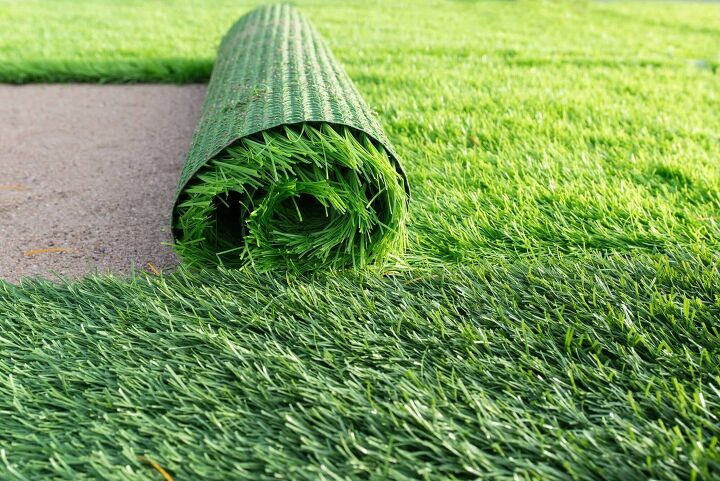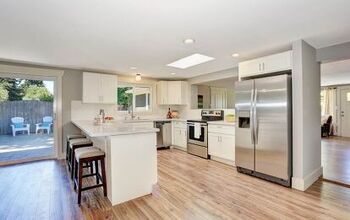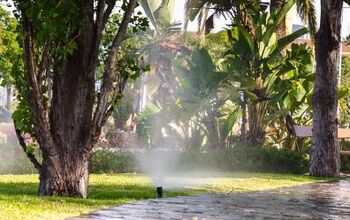What Are The Disadvantages Of Artificial Grass?

When I was younger, I quickly realized that I don’t want to have a front lawn simply because I didn’t want to mow the lawn. When I heard about artificial grass, I was pretty thrilled.
Some people actually have artificial grass as a way to bypass all the mowing, trimming and watering. I was down for it, but then I found out that artificial grass has its own drawbacks.
Artificial grass doesn’t offer the same cooling effects as regular grass. It also has a different texture that may make it rough on feet, can have an odor buildup if not properly washed, could potentially be toxic, and may also melt if exposed to a high enough heat.
Though it seems like an easy way to make sure that you don’t have too many chores in your future, lining your home with fake grass isn’t going to be all roses. Artificial grass isn’t for everyone, and in fact, might not be for most homes due to the drawbacks.
Before you call up an astroturfing company, you should be aware of the drawbacks that this “grass” can have.
Do You Need Landscaping Services?
Get free, zero-commitment quotes from pro contractors near you.

Why Do People Choose Artificial Grass For Their Homes?
Artificial grass, also known as astroturf, tends to be chosen for one reason and one reason only. The reason is that fake grass tends to be as low-maintenance as it gets. It’s basically pavement, except it’s green and looks grass-like.
With fake grass, you never have to water, mow, or weed it.
Since it’s not real grass, artificial grass won’t have the same risk of getting infested by pests as regular grass does. It also means that you won’t have to worry about replacement or repairs to your lawn. This makes it very attractive to anyone who’s had to battle pinworms or other pests in the past.
Advantages to Artificial Grass Lawns
Before we examine the disadvantages of artificial grass, let’s take a deeper look at the advantages to replacing natural grass with artificial turf.
- Non-toxic. The construction of artificial grass does not include any poisonous materials. Also, you don’t need to use any toxic pesticides or fertilizers to keep the turf bug-free and looking its best. This makes it safer for you, your family, and the planet.
- Water conservation. Depending on the state you live in, they may be continuing to tighten water restrictions. Installing an artificial grass lawn makes it much easier to comply with local regulations. As a result, you’ll dramatically reduce your water usage. Water conservation is both budget-friendly and eco-friendly.
- Non-allergenic. Put simply, fake grass does not grow so you can say goodbye to grass pollen. You and your family will be able to enjoy your lawn allergy-free all year long.
- Durability. The materials that are used in the construction of artificial grass are considerably durable, making it able to stand up against many situations. It is dig-proof from dogs and yard pests, fade-resistant, stain-resistant, and the edges won’t fray.
- Return on investment. You can expect high-quality artificial turf to pay for itself in just a couple of years since it effectively eliminates all lawn care expenses. As an added bonus, a fake grass lawn tends to boost the resale value of a property.
- Safety. Conventional grass lawns can feature humps or dips which can cause injuries if children, adults, and pets trip while running or playing on the surface. Conversely, the surface or artificial grass is always smooth and even. Not to mention, fake grass is often constructed with a technology that helps protect children from falls as high as five feet.
While there are numerous benefits to consider, there are tons of reasons why you might not want to get faux grass for your lawn…
What Problems Come With Owning Artificial Lawns?
Back in the 1950s, artificial grass was seen as the wave of the future. Unfortunately, things didn’t always pan out. At times, the actual price of the grass was too much to handle. Other times, other issues began to crop up that made unappealing. What I’m saying is, there’s a reason that it’s the future and not many people are using faux grass.
These issues below make it a tough sell:
- Artificial grass doesn’t look like real grass, nor does it feel like it. If you were hoping for realistic grass on your lawn, then you’re going to be in for a rude awakening. Faux grass has a very beady (or stringy) appearance. It also has a very stringy, rough texture. Most people will be able to tell that your lawn is fake right off the bat.
- It may not be pet-appropriate. Some dogs and cats have been known to chew on faux grass. This can cause digestive problems long-term. Pets that relieve themselves outside might also turn faux grass into a festering mess if it’s not kept incredibly clean.
- HOAs hate faux grass. Most homeowners’ associations won’t allow people to install faux grass on their lawns as a result of the way they look. You might get cited if you get astroturf for your lawn or you might even be barred from getting it installed at all. Before getting artificial grass, make sure to run it by your homeowners’ association to see if it’s okay.
- Like other similar turf types, you can end up having a pretty foul odor emitting from the grass. Because the “grass” doesn’t seep into the ground, any stuff that gets spilled onto your lawn will end up staying there until you rinse it (or even wash it) away. Some turfs can also trap odor inside them. This can lead to lawns that smell pretty foul.
- Artificial grass also won’t cool down on hot days. Natural grass will cool down terrain during hot days. Artificial grass, on the other hand, will get hotter. This can lead to uncomfortable days in the backyard, especially if you prefer to walk around cool grass or if you live in an area where heat can become unbearable.
- Some people have raised alarms about ingredients in artificial grass. As people pay more attention to eco-friendly materials, many companies that make faux grass fillers have come under fire for using toxic ingredients that could eventually leech into the environment. If you are concerned about carcinogens, this could be a dealbreaker.
How Much Does Artificial Grass Cost?
Believe it or not, artificial grass is cheaper over the course of its lifetime than real grass. Unfortunately, the cost for artificial grass is all upfront and it’s still a big price ticket. The cost to install artificial grass in a house ranges between $5 to $20 per square foot. For comparison, professionally laid sod will only cost between 15 to 70 cents per square foot.
Artificial grass is much higher in price than a typical square foot of real grass, but the price of maintaining real grass ends up being more expensive in the long run. It’s up to you to decide whether you want a higher upfront cost or if you want to pay a little extra per year for grass maintenance.
Is Artificial Grass Worth It?
Artificial grass is more of a “quirk” type of house addition than anything else. While it does offer a lot of cost benefits long-term and a good way to skip out on maintenance, it’s still not something that most people will want to have.
In some cases, having artificial grass can even be a cause of lowered property values. Because this is such a hit or miss type of home improvement, it’s better to talk to a property appraiser when you decide to make the switch.
This is doubly true if you are looking to flip a home, or if you want to sell your house in the near future.
Do You Need Landscaping Services?
Get free, zero-commitment quotes from pro contractors near you.

Related Questions
What is the cheapest type of artificial grass?
If you are worried about going over budget, then the best choice you can make is to get recycled grass. This is artificial grass made out of recycled materials. It’s typically cheaper than traditional astroturf, and lasts just as long as the old school stuff.
How long does artificial grass last?
Assuming that you take good care of it and maintain it, artificial grass should remain intact for 20 to 25 years. This bars any potential unseen issues such as a house fire, as well as water-related perils like a flood.
Can I just lay artificial grass over soil?
Unfortunately, artificial grass doesn’t work well when placed directly on top of the soil. To ensure that your grass has a grippy base, you will need to add a layer of compacted sharp sand (or a performance pad) to the top of your soil and remove any plant matter that could potentially grow under your new faux grass.
How often does artificial grass melt?
Modern artificial grass types shouldn’t be easy to melt. However, throwing lit cigarettes or using a grill can still cause melting in most types of artificial soil. When living with an artificial lawn, make sure to avoid having lit fires on or around your turf.

Ossiana Tepfenhart is an expert writer, focusing on interior design and general home tips. Writing is her life, and it's what she does best. Her interests include art and real estate investments.
More by Ossiana Tepfenhart



























